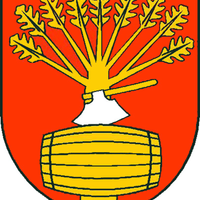Niepolomice Forest
7.05

Overview
Niepołomicka Forest, located in the western part of the Sandomierz Basin, was once part of an extensive forest complex that served as a favorite hunting ground for rulers from the 13th to the 18th century. Its history dates back to 1242, and the first records of the name "Puszcza Niepołomicka" appear in 1441. During the times of Polish kings such as Casimir the Great and John III Sobieski, the forest was a site for hunting big game, including bears, bison, and deer, making it a significant element of hunting culture. After World War II, the forest suffered from military operations and exploitative forestry practices, resulting in the destruction of vast stretches of woodland. The forest is also a place of remembrance, home to war cemeteries and monuments commemorating the victims of war and executions. From an architectural perspective, the sarcophagus of the child of Sigismund I the Old, who died during a hunt, is noteworthy. The forest contains six nature reserves, including Gibiel, Lipówka, and Długosz Królewski, which protect unique species of plants and animals, including bison. It is home to 170 species of vertebrates, and its biodiversity contributes to an abundance of amphibians and mammals, including roe deer, wild boar, and wolves. Within the Niepołomicka Forest area, numerous tourist trails have been established, allowing visitors to explore its natural and historical richness in an enjoyable way. Interestingly, the forest's name derives from the word "niepołomny," suggesting that in the past, it was an extremely difficult land to clear. Niepołomicka Forest is not only a natural oasis but also a witness to historical events that have shaped Poland's destiny.
Location
Tickets
Powered by GetYourGuide
You can also find here:
2025 Wizytor | All Rights Reserved

